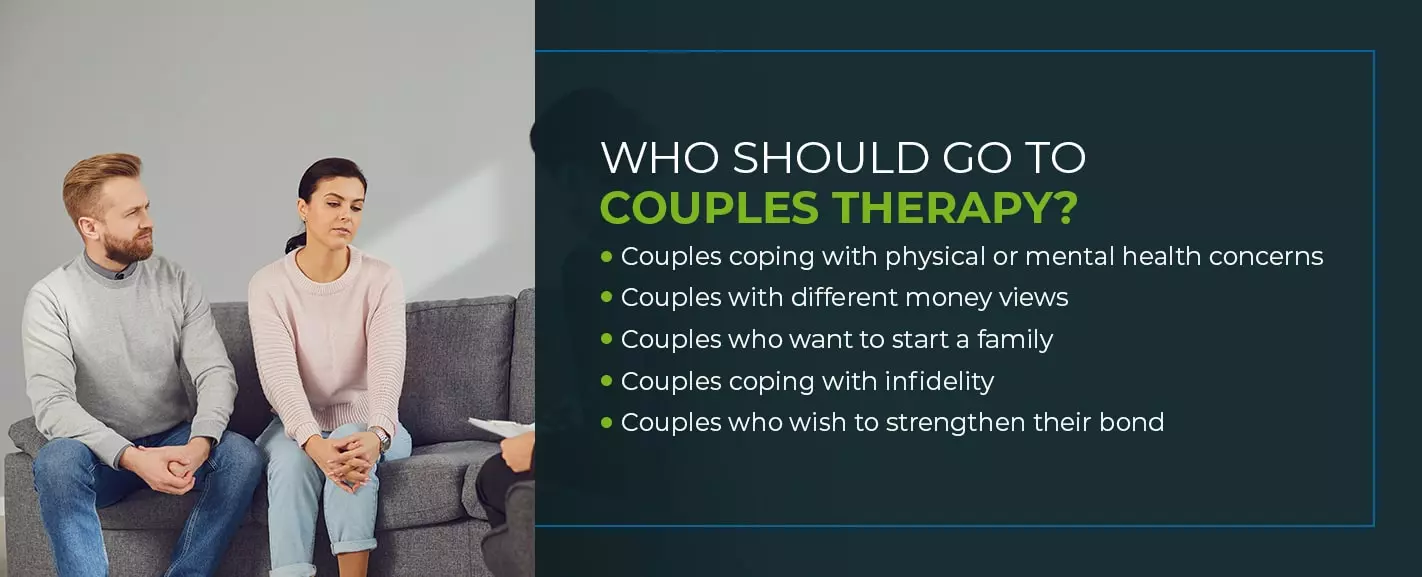The Ultimate Guide To Aim Point Counseling
The Ultimate Guide To Aim Point Counseling
Blog Article
Get This Report about Aim Point Counseling
Table of ContentsAim Point Counseling - QuestionsThe smart Trick of Aim Point Counseling That Nobody is DiscussingThe Basic Principles Of Aim Point Counseling About Aim Point CounselingEverything about Aim Point CounselingAim Point Counseling - Questions
The longitudinal design entails a pre-treatment survey and two follow-up studies at 3- and 12-months post-intervention. The research study is embeded in eight Relationships Australia Victoria centres, across municipal, external suburban areas, and regional/rural sites. Relationships Australia, a non-government organisation, is the largest supplier of couple counselling and connection solutions in Australia.
These high prices of relationship failure have been continually connected with negative health consequences for both grownups and youngsters adhering to divorce/separation.
Aim Point Counseling Fundamentals Explained
Longitudinal studies likewise suggest that children of divorce have a greater incidence of psychological conditions, alcohol and drug usage, and risky sex-related practices [7] Although the impacts of divorce and separation can be destructive, study suggests that high partnership dissonance in intact couples is additionally likely to have unfavorable results.
Elements that influence the results of these solutions need thorough examination. Research to date has recognized both couple and private aspects that might add to connection disharmony. These consist of connection complete satisfaction and dedication at the couple degree, and depression at the individual level. Durable research study to evaluate relationship-enhancing interventions in the community are limited.
Unknown Facts About Aim Point Counseling
Partnership fulfillment has been the most usual end result variable recognized in more than 200 analyses of pair coaching [11,12] Studies have actually discovered significant renovations in relationship contentment from pre- to post-treatment [13,14] and throughout one to 2 years following coaching [15] In these research studies, relationship fulfillment was most regularly examined utilizing the Dyadic Modification Scale (DAS) [16] While most researches show renovations in relationship contentment adhering to couple coaching, they are restricted by the samples and actions utilized, mainly temporary follow-up time frameworks, and analyses that do not account for the dyadic nature of pair data., is another commonly investigated relationship result.
To sum up, study shows that couple-specific variables in addition to individual aspects might predict the outcomes of couple therapy and relationship services. The causal direction of these relationships, however, is much less clear. These observations are vital, because, to justify and lead the application of partnership services such as pair coaching, empirical proof needs to check out both the outcomes of partnership solutions and the aspects that predict effective therapy.
Consequently, there is an expanding consensus that efficacy studies must be matched by efficiency research to best inform professional technique [ 29] The minimal efficiency research that exists to date recommends that couple coaching can enhance results such as connection satisfaction [33,43], interaction abilities and general health [44], at reference least in some European countries.

We presently understand little concerning the profiles of pairs that choose partnership education and learning compared to those that seek partnership therapy, or the results of these programs. Unscientific evidence recommends that there may be considerable distress among at the very least some couples looking for relationship education and learning. Partnership education and learning programs vary from couple counselling as they are usually extremely structured, conducted in teams, and concentrate on a combination of four elements; understanding, responses, cognitive change, and skills training [45]
A Biased View of Aim Point Counseling
Responses includes participants completing sets of questions about their relationship (e.g. actions of interpersonal issues), and obtaining info on what their ratings show. Cognitive-behavioural techniques promote altering cognitions to assist in favorable partnerships.
These meta-analyses highlight constraints in the present literature on connection education and learning. This example profile might not represent clients who commonly present for partnership education.
Aim Point Counseling Can Be Fun For Everyone
/assets/production/practices/42c324c45018d9ed1279a759bd3482c101ad073f/images/2588472.jpg)
Extremely little study has actually checked out the comparative advantages of couple coaching and connection education programs. As customers are most likely to self-select into these service kinds, it is unclear whether particular partnership distress accounts existing to every service kind, or undoubtedly whether there is a communication in between offering account, service kind and outcome.
(https://www.dreamstime.com/toddrashid01_info)
Hence, we have actually included a 12-month follow-up to evaluate longer-term patterns and impacts.
Therefore, we suggest to make use of multi-level analytical modelling procedures that manage for the inter-dependence of couple data to analyze any type of therapy effects. The certain aims of the ECC study are to: 1. Map accounts of customers seeking area agency-based couple counselling vs. relationship enhancement programs in regards to socio-demographic and partnership signs (such as relationship satisfaction, partnership dedication, interpersonal problems, and reasons for going to), in addition to health and wellness (such as clinical depression, general wellness) and health and wellness solution use (eg.
2. Figure out whether couple therapy and partnership education and learning solutions improve three- and twelve-month end results for connection satisfaction, commitment, and anxiety, making use of analytical evaluations proper to pair data. 3. Figure out the loved one contributions of customer aspects (specific and pair) and therapy/education elements to results at 3- and 12-months, and to sustainability of results over time.
Excitement About Aim Point Counseling
Multi-level modelling to figure out pre-post differences, managing for dyadic (couple) degree. To add to the literary works assessing the performance of community-based pair counselling. The results will help professional decision-making in community-based partnership service setups, and expert training. 3. To identify the family member payments of client/couple and treatment factors to results at 3- and 12-months, and to sustainability of end results with time.
Report this page